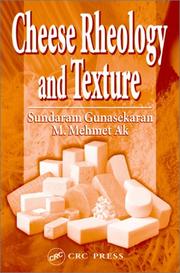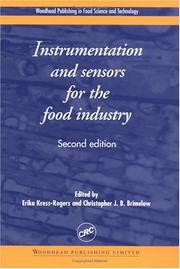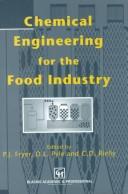| Listing 1 - 10 of 44 | << page >> |
Sort by
|
Book
Year: 2017 Publisher: KIT Scientific Publishing
Abstract | Keywords | Export | Availability | Bookmark
 Loading...
Loading...Choose an application
- Reference Manager
- EndNote
- RefWorks (Direct export to RefWorks)
This work examines the mechanical deformation of flexible pavement under vertical load. Mechanical approaches for the computation of the radius of curvature R0 at the centre of the loaded area from HWD data were developed. Material parameter have been backcalculated in an iterative way using rheological models After that the radius of curvature has been subsequently calculated based on mechanical systems.
Asphalt --- FWD --- RheologieAsphalt --- bearing capacity --- rheological models --- Tragfähigkeit

ISBN: 1587160218 Year: 2003 Publisher: Boca Raton : CRC Press,
Abstract | Keywords | Export | Availability | Bookmark
 Loading...
Loading...Choose an application
- Reference Manager
- EndNote
- RefWorks (Direct export to RefWorks)
Fromage --- Cheese --- Fabrication fromagère --- C heesemaking --- Propriété rhéologique --- Rheological properties --- Mesure --- Measurement --- Kaas --- 664.6 --- Texture --- Dairy products

ISBN: 1591243416 9781591243410 1855735601 9781855735606 084931223X 9780849312236 1855736489 9781855736481 Year: 2001 Publisher: Boca Raton : Cambridge : CRC Press ; Woodhead Publishing Limited,
Abstract | Keywords | Export | Availability | Bookmark
 Loading...
Loading...Choose an application
- Reference Manager
- EndNote
- RefWorks (Direct export to RefWorks)
The first edition of this book quickly established itself as the standard reference in its field, and the second edition consolidates this reputation. Keeping up with the rapid change in this area, there are 16 new contributors and 8 completely new chapters, as well as major revisions to existing chapters, making this second edition a substantially longer book.
Food industry and trade --- Food --- Equipment and supplies --- Quality control --- Analysis --- foods --- Quality --- Organoleptic properties --- Rheological properties --- Optical properties --- biological properties --- Measurement --- Measuring instruments --- Sensors
Book
Year: 2021 Publisher: Basel, Switzerland MDPI - Multidisciplinary Digital Publishing Institute
Abstract | Keywords | Export | Availability | Bookmark
 Loading...
Loading...Choose an application
- Reference Manager
- EndNote
- RefWorks (Direct export to RefWorks)
Elastomer materials are characterized by their high elongation and (entropy) elasticity, which makes them indispensable for widespread applications in various engineering and medical areas as well as consumer goods. This book focuses on the state-of-the-art of elastomers covering all aspects from their properties to applications. The development and testing of advanced elastomers is of particular interest. Attention is given to various aspects of elastomers, such as ever-increasing environmental concepts dealing with recyclability and reusability, incorporation of functional groups or additives to obtain novel functionality or bioelastomers, analytical description of mechanisms and structure relations of the fracture behavior of elastomers, and their external stimuli-responsive character. The scope of the book encompasses contributions at the frontier of science in polymer network synthesis, experimental and theoretical physics of polymer networks, and new structures and functionalities incorporated into elastomers leading to enhanced properties of crosslinked elastomeric materials, among others.
magnetorheological elastomer --- filler --- hetero-aggregation --- nanosized Ni-Mg cobalt ferrites --- electrical resistance --- resistivity --- rheological properties --- elastomers --- in-situ silica --- friction --- abrasion --- tear fatigue test --- buffing dust collagen (BDC) --- styrene–butadiene rubber (SBR) --- polymer composites --- biodegradation --- bio-oil --- bio-based plasticizer --- eco-friendly plasticizer --- acrylonitrile-butadiene rubber --- NBR --- mechanical testing --- thermo-oxidative aging --- vulcanized rubber --- rubber compounds --- carbon black --- vibration damping --- viscoelasticity --- magnetorheological --- elastomer --- magnetic particle --- viscoelastic --- rheological --- smart materials --- coating --- particle coating --- n/a --- styrene-butadiene rubber (SBR)
Book
Year: 2020 Publisher: Basel, Switzerland MDPI - Multidisciplinary Digital Publishing Institute
Abstract | Keywords | Export | Availability | Bookmark
 Loading...
Loading...Choose an application
- Reference Manager
- EndNote
- RefWorks (Direct export to RefWorks)
Rheology, defined as the science of deformation and flow of matter, is a multidisciplinary scientific field, covering both fundamental and applied approaches. The study of rheology includes both experimental and computational methods, which are not mutually exclusive. Its practical importance embraces many processes, from daily life, like preparing mayonnaise or spreading an ointment or shampooing, to industrial processes like polymer processing and oil extraction, among several others. Practical applications include also formulations and product development. Following a successful first volume, we are now launching this second volume to continue to present the latest advances in the fields of experimental and computational rheology applied to the most diverse classes of materials (foods, cosmetics, pharmaceuticals, polymers and biopolymers, multiphasic systems, and composites) and processes.
graphene oxide --- polyethylene glycol --- rheological characterization --- human milk --- tube feeding --- breastfeeding --- viscosity --- complex modulus --- density --- rheological measurements --- non-viscometric geometries --- Couette analogy --- shear thinning fluids --- suspensions --- bread --- whey --- complex fluids --- experimental rheology --- breadmaking --- yield stress --- grout --- polypropylene fiber --- masonry --- consolidation --- rheology --- drop impact --- elasto-viscoplastic material --- free surface --- gravitational effects --- MRSA --- S. aureus --- antibiotics --- oxacillin --- bactericidal --- injection molding --- filling stage --- Cross-WLF model --- Tait model --- finite volume method --- openInjMoldSim --- OpenFOAM® --- Boger fluids --- circular contraction flow --- lip vortex --- pressure-drops --- vortex-enhancement --- first normal-stress difference --- swIM model --- reactive extrusion --- data-driven --- machine learning --- artificial engineering --- polymer processing --- digital twin --- n/a
Book
Year: 2020 Publisher: Basel, Switzerland MDPI - Multidisciplinary Digital Publishing Institute
Abstract | Keywords | Export | Availability | Bookmark
 Loading...
Loading...Choose an application
- Reference Manager
- EndNote
- RefWorks (Direct export to RefWorks)
Semi-solid metal (SSM) processing, as a viable alternative manufacturing route to those of conventional casting and forging, has not yet been fully exploited despite nearly half a century since its introduction to the metal industry. The slow pace of adopting SSM routes may be due to various reasons, including capital costs, profit margins, and, most importantly, the lack of detailed analysis of various SSM processes in open literature to confidently establish their advantages over more conventional routes. Therefore, the SSM community must disseminate their findings more effectively to generate increased confidence in SSM processes in the eyes of our industrial leaders. As such, we have embarked on the task to invite the leaders in SSM research to share their findings in a Special Issue dedicated to semi-solid processing of metals and composites. SSM processing takes advantage of both forming and shaping characteristics usually employed for liquid and solid materials. In the absence of shear forces, the semi-solid metal has similar characteristics to solids, i.e., easily transferred and shaped; by applying a defined force, the viscosity is reduced and the material flows like a liquid. These unique dual characteristics have made SSM routes attractive alternatives to conventional casting on an industrial scale. With the intention of taking full advantage of SSM characteristics, it is crucial to understand SSM processing, including topics such as solidification and structural evolution, flow behavior through modelling and rheology, new processes and process control, alloy development, and properties in general. This Special Issue focuses on the recent research and findings in the field with the aim of filling the gap between industry and academia, and to shed light on some of the fundamentals of science and technology of semi-solid processing.
7075 aluminum alloy --- thixoforming --- post-welding-heat treatment --- electron beam welding (EBW) --- nano-sized SiC particle --- wear rate --- friction coefficient --- rheoformed --- thixoformed --- semi-solid --- microstructure --- mechanical properties --- wear --- corrosion --- Al–Si alloys --- rheocasting --- HPDC --- electrochemical evaluation --- rheological model --- semi-solid state --- Mg alloys --- high-temperature rheology --- rheological properties --- rheology --- semi-solid alloys --- thixotropy --- rheometer --- compression test --- viscosity --- semi-solid material --- A356 alloy --- electromagnetic stirring --- compression --- primary α-Al particle --- enclosed cooling slope channel --- ZCuSn10P1 --- microstructure refinement --- properties --- thixowelding --- thixojoining --- semisolid joining --- cold-work tool steel --- semisolid processing --- thixoformability --- Fe-rich Al-Si-Cu alloy --- 2024 aluminum matrix composites --- Al2O3 nanoparticles --- polarized light microscopy --- anodic etching --- EBSD --- grain --- globule --- Al-Si alloy --- semi-solid metal processing --- EMS --- thixocasting --- n/a --- Al-Si alloys
Periodical
ISSN: 13595997 00255432 18716873 Year: 1987 Publisher: London E. & F. N. Spon
Abstract | Keywords | Export | Availability | Bookmark
 Loading...
Loading...Choose an application
- Reference Manager
- EndNote
- RefWorks (Direct export to RefWorks)
Materials --- Concrete --- Testing laboratories --- Matériaux --- Béton --- Laboratoires d'essais --- Testing --- Periodicals. --- Essais --- Périodiques --- Dwellings --- Remodeling --- #TS:TCON --- Periodicals --- Engineering --- Civil Engineering --- General and Others --- Béton --- Matériaux --- Journal --- E-journals --- Testing laboratories. --- Testing. --- Remodeling. --- materialen --- materials --- beton --- concrete --- fractals --- reologische eigenschappen --- rheological properties --- treksterkte --- tensile strength --- fysische eigenschappen --- physical properties --- engineering --- Physics (General) --- Mechanical and Electronic Engineering --- Fysica (algemeen) --- Werktuigbouwkunde en elektrotechniek --- Test facilities --- Laboratories --- Beton --- Building materials --- Home remodeling --- Remodeling (Architecture) --- Remodeling of dwellings --- House construction

ISBN: 1855735601 9786610372560 1591243416 1280372567 1855736489 9781591243410 9781855735606 084931223X 9780849312236 9781855736481 Year: 2001 Publisher: Burlington : Elsevier Science,
Abstract | Keywords | Export | Availability | Bookmark
 Loading...
Loading...Choose an application
- Reference Manager
- EndNote
- RefWorks (Direct export to RefWorks)
The first edition of this book quickly established itself as the standard reference in its field, and the second edition consolidates this reputation. Keeping up with the rapid change in this area, there are 16 new contributors and 8 completely new chapters, as well as major revisions to existing chapters, making this second edition a substantially longer book.Instrumentation and sensors for the food industry 2nd edition begins with two introductory chapters to set the scene, part one covers in-line measurement of food processing operations, including colour measurement, the measuremen
Food industry and trade --- Food --- 664 --- Voedingsindustrie : kwaliteitscontrole --- 681.586 --- 664 Production and preservation of solid foodstuffs --- Production and preservation of solid foodstuffs --- 681.586 Transducers. Sensors --- Transducers. Sensors --- Analysis of food --- Chemistry of food --- Food, Chemistry of --- Food chemistry --- Chemistry, Technical --- Sanitary chemistry --- Equipment and supplies --- Quality control --- Analysis --- Chemistry --- Composition --- Engineering --- Food Science and Technology --- Chemical & Materials Engineering --- Engineering & Applied Sciences --- Chemical Engineering --- foods --- Quality --- Organoleptic properties --- Rheological properties --- Optical properties --- biological properties --- Measurement --- Measuring instruments --- Sensors
Book
Year: 2021 Publisher: Basel, Switzerland MDPI - Multidisciplinary Digital Publishing Institute
Abstract | Keywords | Export | Availability | Bookmark
 Loading...
Loading...Choose an application
- Reference Manager
- EndNote
- RefWorks (Direct export to RefWorks)
The oil industry has, in the last decade, seen successful applications of nanotechnology in completion systems, completion fluids, drilling fluids, and in improvements of well constructions, equipment, and procedures. However, very few full field applications of nanoparticles as an additive to injection fluids for enhanced oil recovery (EOR) have been reported. Many types of chemical enhanced oil recovery methods have been used in fields all over the world for many decades and have resulted in higher recovery, but the projects have very often not been economic. Therefore, the oil industry is searching for a more efficient enhanced oil recovery method. Based on the success of nanotechnology in various areas of the oil industry, nanoparticles have been extensively studied as an additive in injection fluids for EOR. This book includes a selection of research articles on the use of nanoparticles for EOR application. The articles are discussing nanoparticles as additive in waterflooding and surfactant flooding, stability and wettability alteration ability of nanoparticles and nanoparticle stabilized foam for CO2-EOR. The book also includes articles on nanoparticles as an additive in biopolymer flooding and studies on the use of nanocellulose as a method to increase the viscosity of injection water. Mathematical models of the injection of nanoparticle-polymer solutions are also presented.
nanomaterials --- pore throat size distribution --- mercury injection capillary pressure --- interfacial tension --- contact angle --- enhanced oil recovery --- surfactant --- nanoparticle --- chemical flooding --- nanocellulose --- cellulose nanocrystals --- TEMPO-oxidized cellulose nanofibrils --- microfluidics --- biopolymer --- silica nanoparticles --- nanoparticle stability --- reservoir condition --- reservoir rock --- crude oil --- nanoparticle agglomeration --- polymer flooding --- formation rheological characteristics --- polymer concentration --- recovery factor --- mathematical model --- nanoparticles --- foam --- CO2 EOR --- CO2 mobility control --- nanotechnology for EOR --- nanoparticles stability --- polymer-coated nanoparticles --- core flood --- EOR --- wettability alteration --- nanoparticle-stabilized emulsion and flow diversion --- n/a

ISBN: 0412495007 1461367247 1461538645 Year: 1997 Publisher: London : Blackie Academic & Professional,
Abstract | Keywords | Export | Availability | Bookmark
 Loading...
Loading...Choose an application
- Reference Manager
- EndNote
- RefWorks (Direct export to RefWorks)
Industrial food processing involves the production of added value foods on a large scale; these foods are made by mixing and processing different ingredients in a prescribed way. The food industry, historically, has not designed its processes in an engineering sense, i.e. by understanding the physical and chemical principles which govern the operation of the plant and then using those principles to develop a process. Rather, processes have been 'designed' by purchasing equipment from a range of suppliers and then connecting that equipment together to form a complete process. When the process being run has essentially been scaled up from the kitchen then this may not matter. However, there are limits to the approach. • As the industry becomes more sophisticated, and economies of scale are exploited, then the size of plant reaches a scale where systematic design techniques are needed. • The range of processes and products made by the food industry has increased to include foods which have no kitchen counterpart, such as low-fat spreads. • It is vital to ensure the quality and safety of the product. • Plant must be flexible and able to cope with the need to make a variety of products from a range of ingredients. This is especially important as markets evolve with time. • The traditional design process cannot readily handle multi-product and multi-stream operations. • Processes must be energetically efficient and meet modern environmen tal standards.
Produit alimentaire --- foods --- Préservation des aliments --- Food preservation --- Échange thermique --- Heat transfer --- design --- Propriété rhéologique --- Rheological properties --- Simulation --- 66.01 --- 664 --- 66.0 --- Chemische technologie : voedingsindustrie --- Chemical engineering and processing principles. Process design and control. Plant layout and services. Materials, properties etc. --- Production and preservation of solid foodstuffs --- 664 Production and preservation of solid foodstuffs --- 66.01 Chemical engineering and processing principles. Process design and control. Plant layout and services. Materials, properties etc. --- Food—Biotechnology. --- Food Science. --- Food industry and trade. --- Chemical engineering. --- Chemistry, Industrial --- Engineering, Chemical --- Industrial chemistry --- Engineering --- Chemistry, Technical --- Metallurgy --- Food --- Food preparation industry --- Food processing --- Food processing industry --- Food technology --- Food trade --- Agricultural processing industries --- Processed foods --- Processing
| Listing 1 - 10 of 44 | << page >> |
Sort by
|

 Search
Search Feedback
Feedback About
About Help
Help News
News